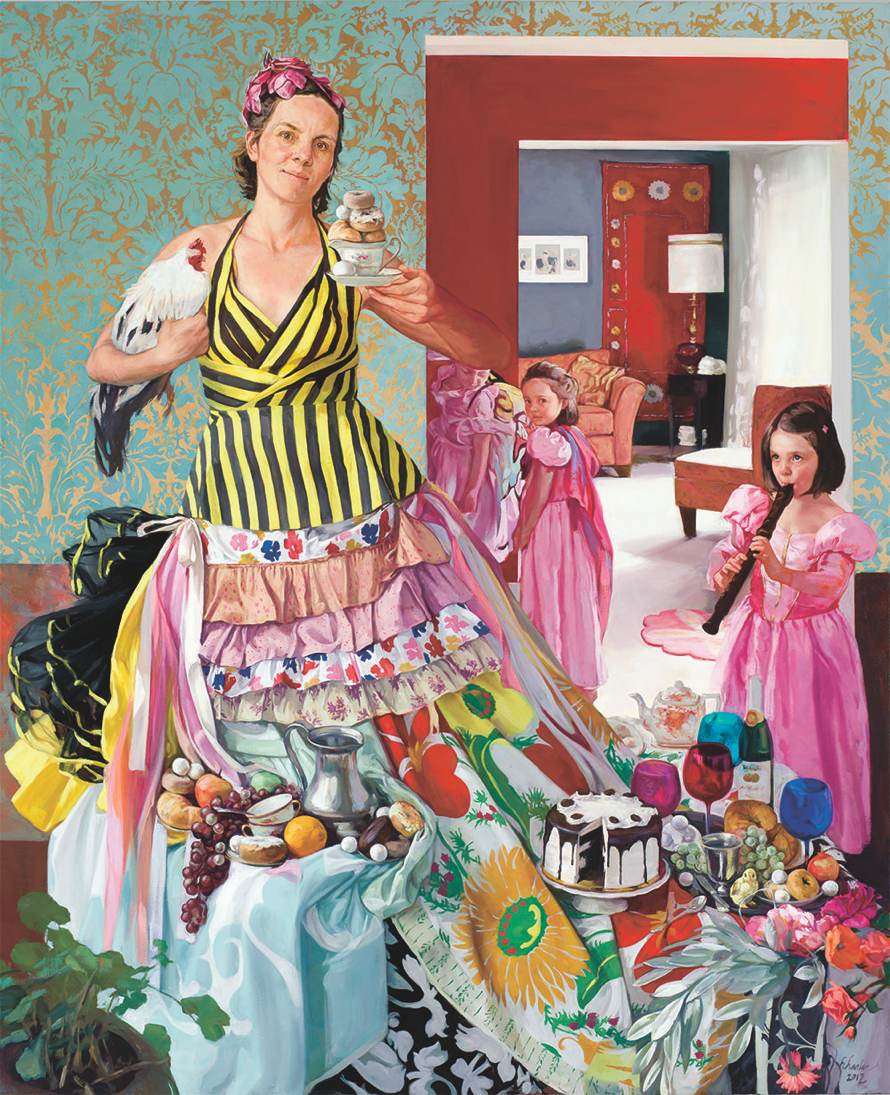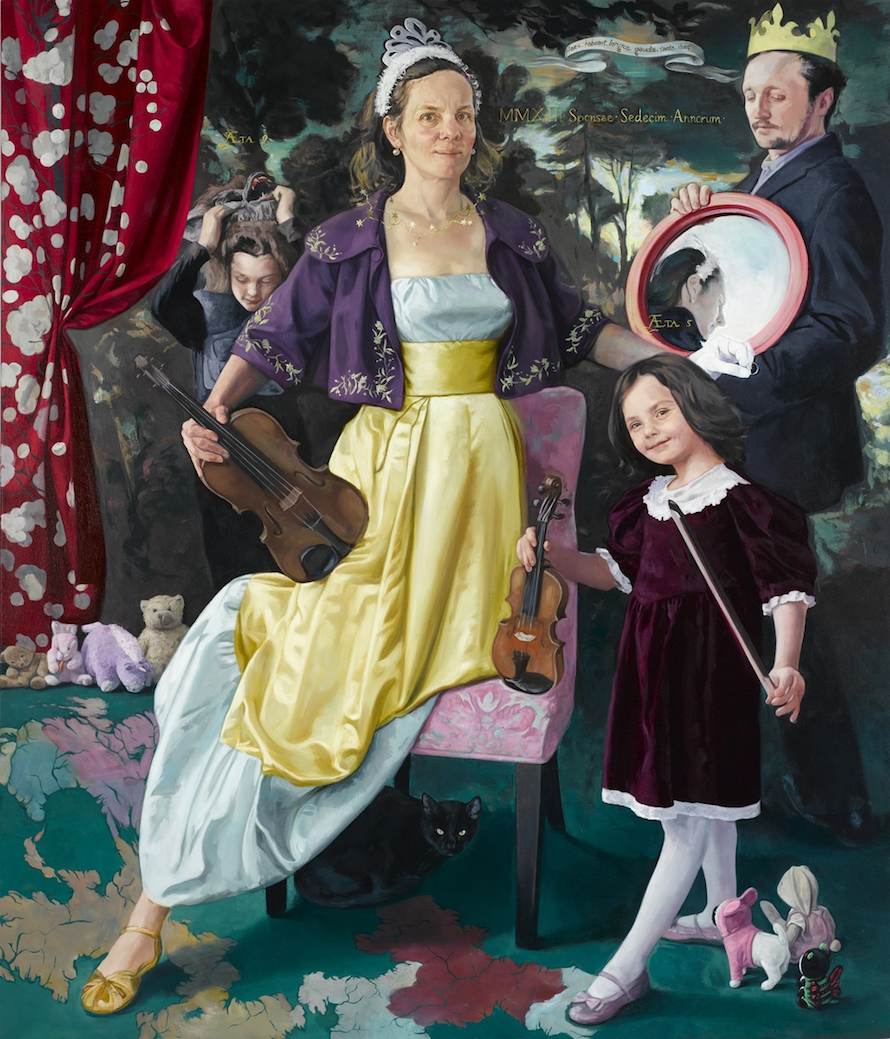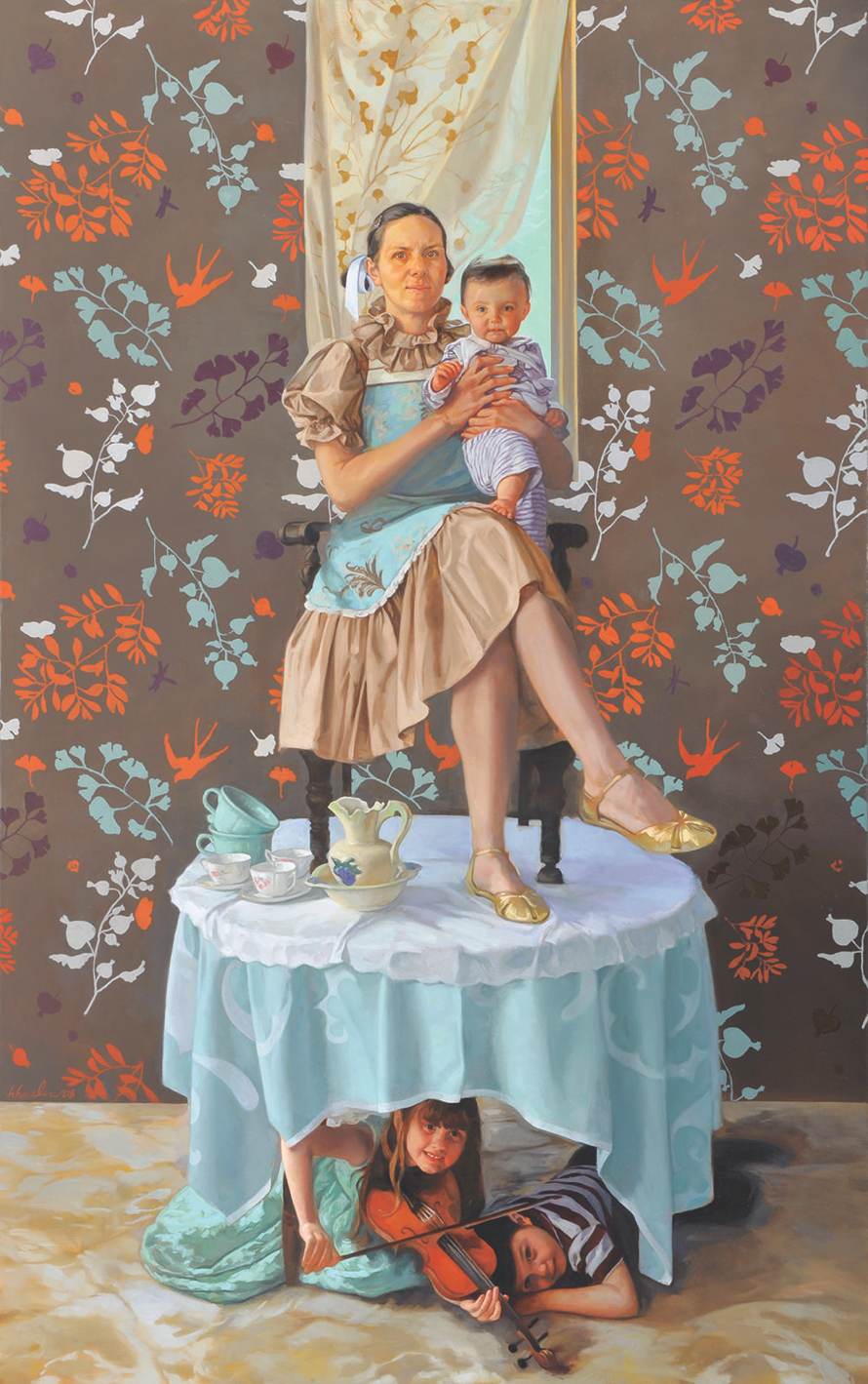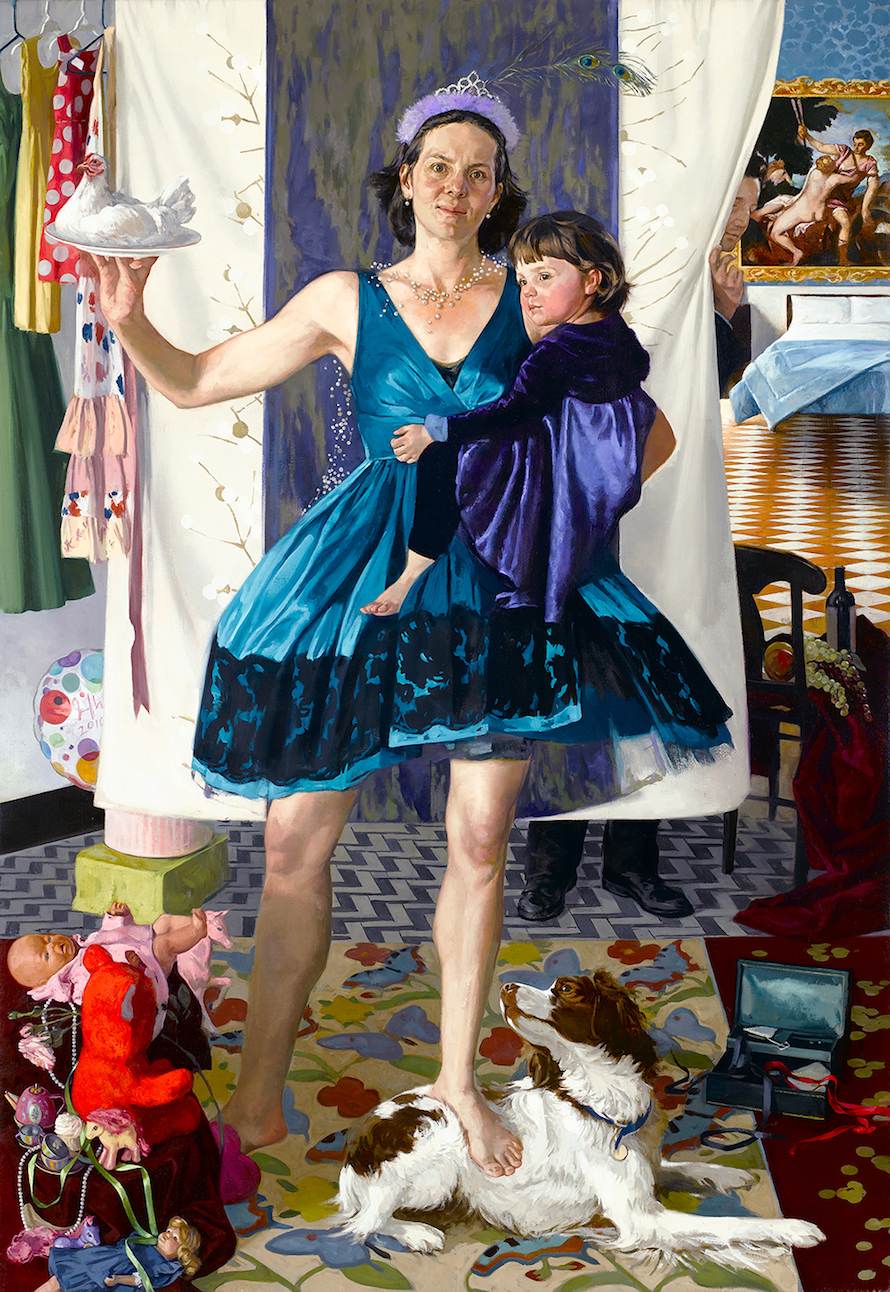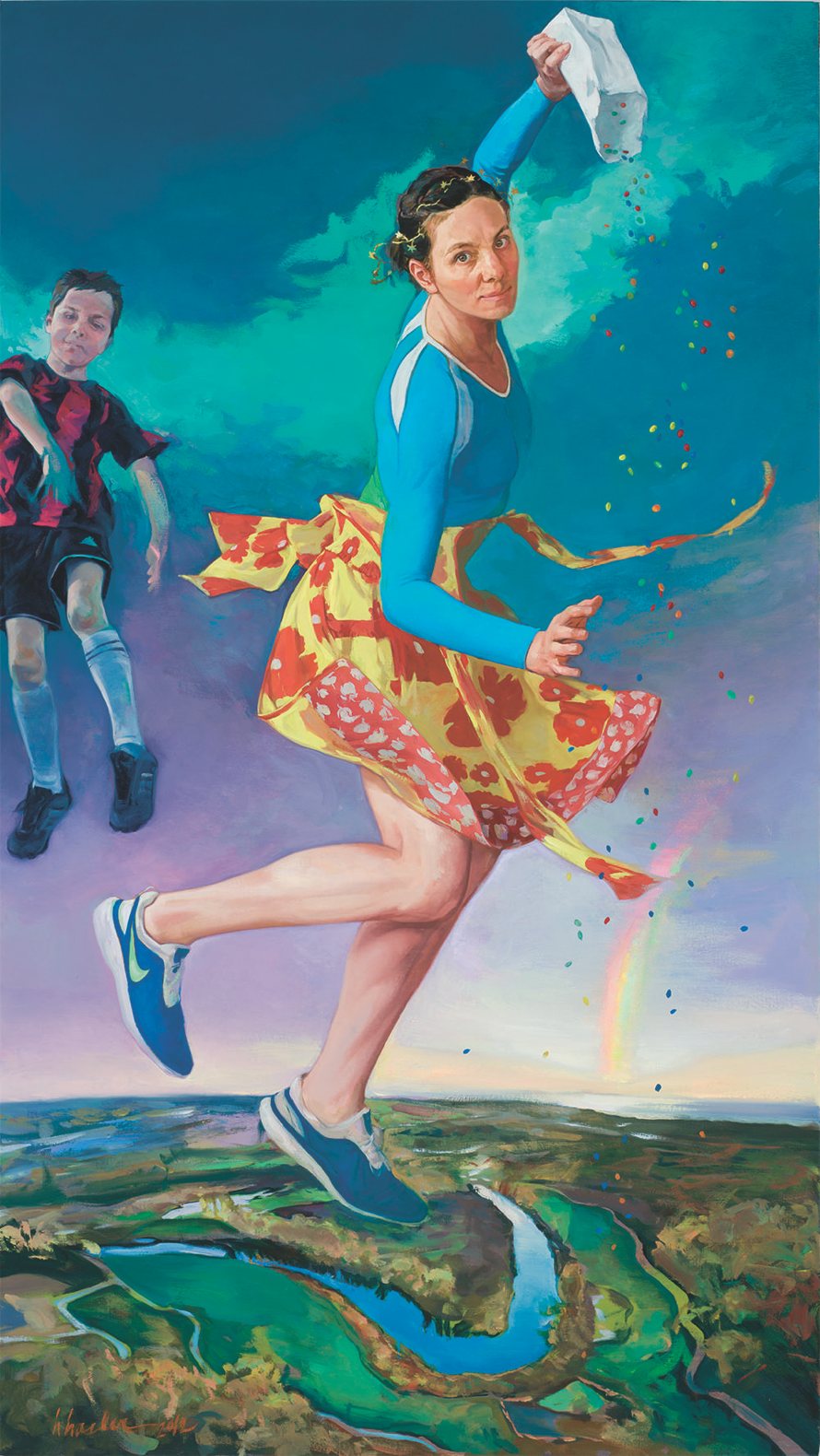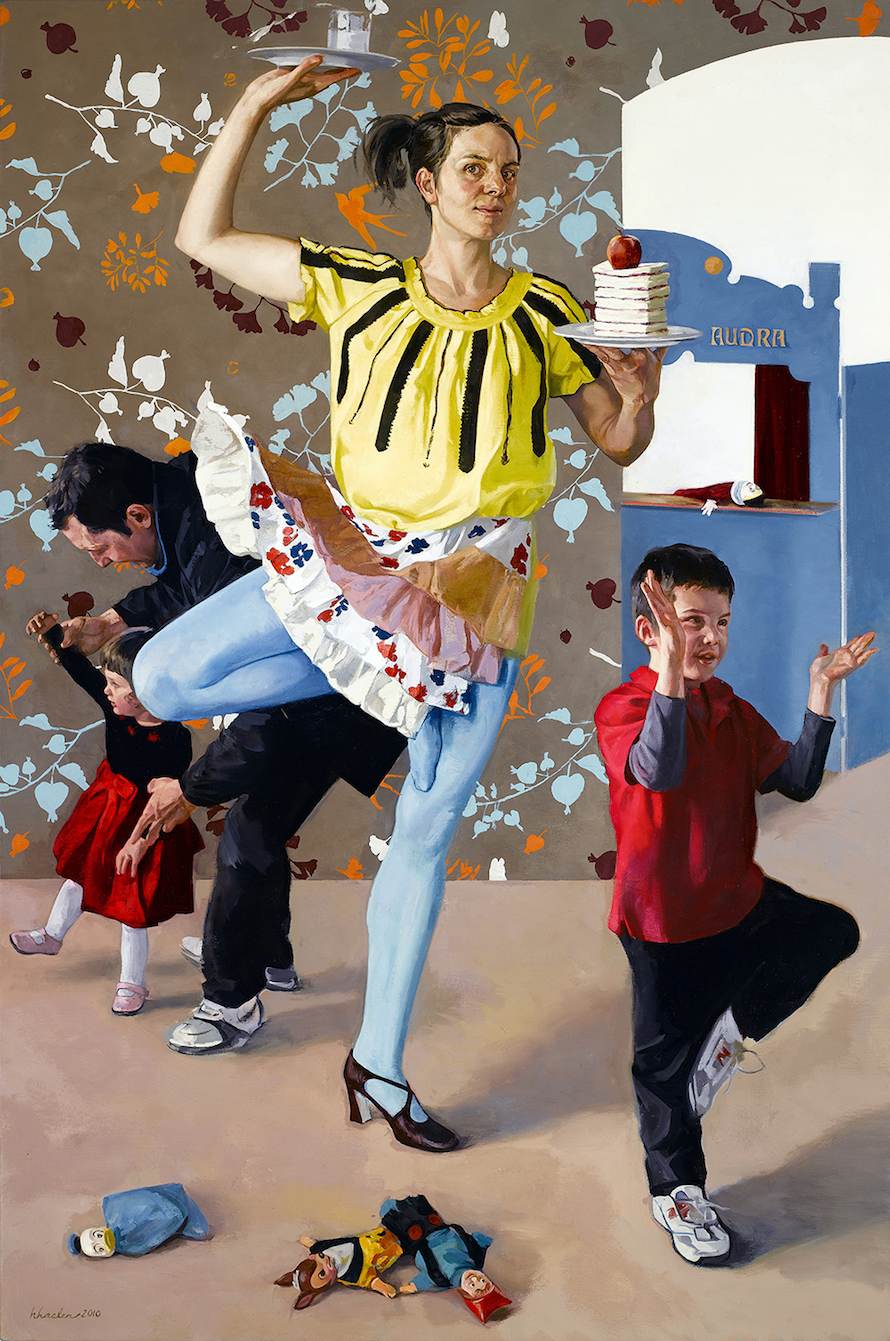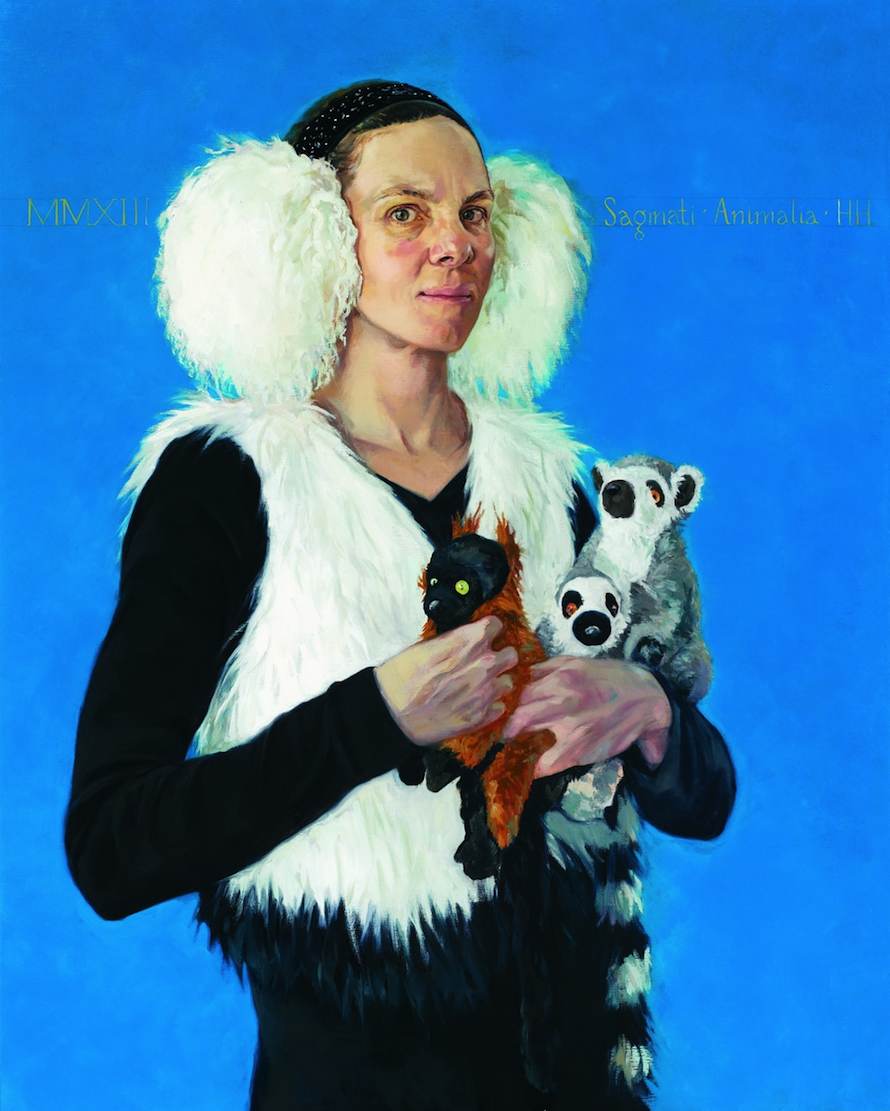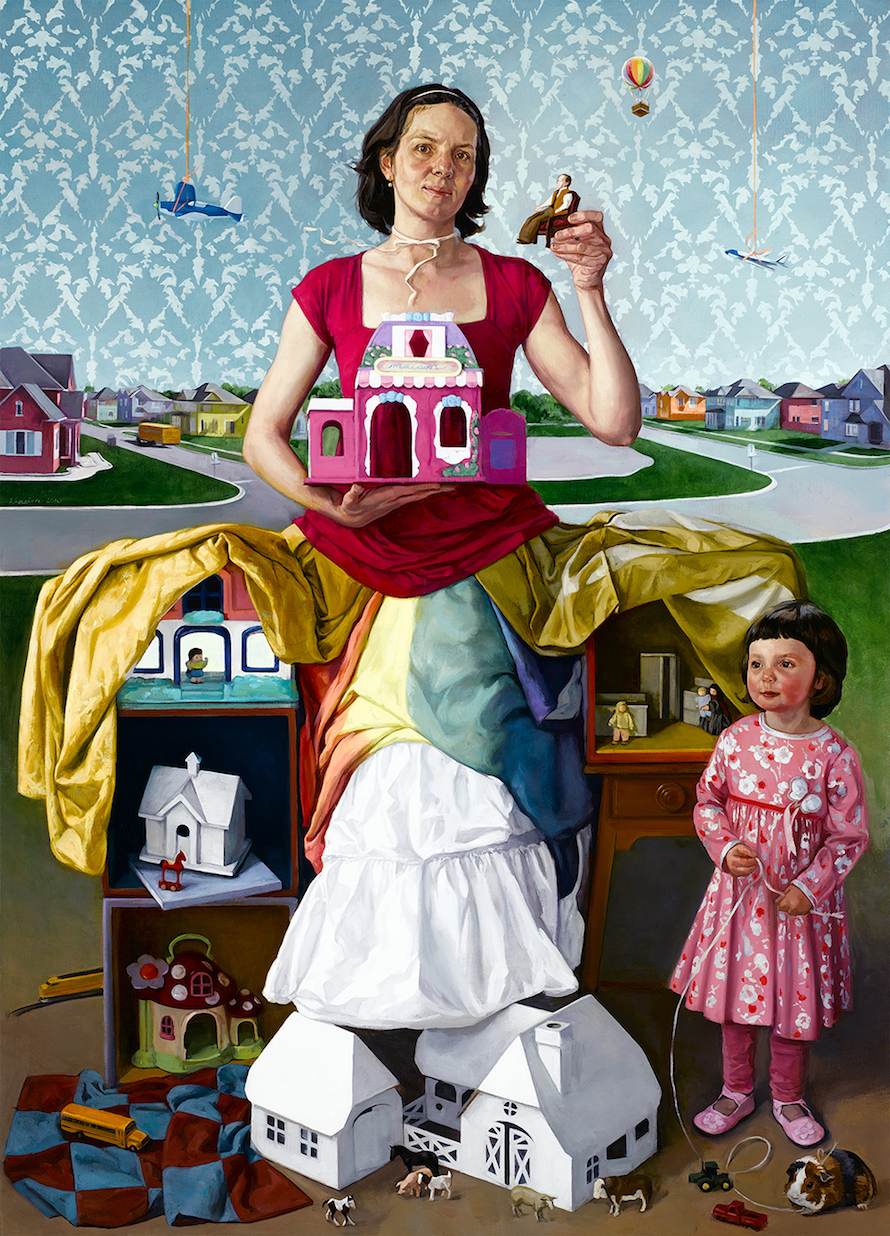Domestic settings dominate your self-portraits. How does your family react to them?
Haley Hasler:My husband and children have never known me as anything but a painter with an autobiographical bent. They have all been cropping up in the paintings since we’ve been a family. The kids are now at an age when they have started to discover that not everybody’s mom does this, and so far they seem to be enjoying the “celebrity” of being recognized in the work when it is displayed in public. For the most part, everyone cooperates well in the modeling, though sometimes some bribing is necessary to get them to pose and hold still.
TMN:When you start a painting, to what extent have the scene and images been planned out?
HH:The paintings often start with a bare wisp of an idea, and they take me somewhere unexpected. The best ones are those in which I give myself over to that process completely, and they come together in form and content almost on their own. I’m like an intermediary. Sometimes the initial idea is a narrative one—for example, the idea of “fidelity”—and sometimes I start with a more formal investigation, like a color combination I’m interested in.
TMN:Is there a piece that was particularly difficult to finish?
HH:Some paintings are “gift” paintings—they come together almost effortlessly, and each mark seems to bring it closer to its conclusion. Those are more rare and often come after I’ve done lengthy battle with its predecessor. “Portrait as Birds and Bees” gave me an inordinate amount of trouble. There are about five different paintings under the surface of that one; I worked on it for many months. But afterwards, a very large work just flowed out in a matter of a few weeks and took me completely by surprise with its ease.
TMN:Some of the portraits are messy to the point of humorous, crammed with everything from babies to plants to peacocks. Did you intend to use humor in your work?
HH:Humor is absolutely important. I like to think in the narrative traditions of Comedy and Tragedy. The Shakespearean comedies always leave you with unease. The whole debacle may appear to be nicely wrapped up, but something is left not quite right at the end.
TMN:How do you spend your Sunday mornings?
HH:With the Sunday New York Times and a cup of coffee—and an order to the kids to be off with themselves.
TMN:You talk about how paintings, particularly these self-portraits, represent both real life and fiction. If art imitates life, does life imitate art?
HH:Of course. No one knew the mountains were beautiful until the Romantics told them so. And, as Harold Bloom put it, Shakespeare invented human nature.
TMN:What are you working on now?
HH:I’m afraid it is one of those battle paintings. Although it appears to be about a woman standing guard over a crew of stuffed animals, I sense that the strife of its making will shape its final manifestation.
